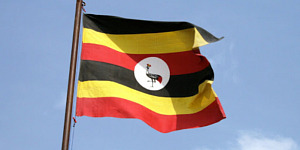Uganda's central bank cut its Central Bank Rate (CBR) by 50 basis points to 9.00 percent, saying "a cautious easing of monetary policy is warranted to further boost private sector credit growth and to strengthen the economic growth momentum" given the spare capacity in the economy and the objective of keeping inflation close to the target.
The rate cut is a continuation of the Bank of Uganda's (BOU) easing campaign that began in April 2016 as it slowly unwinds 600 points of rate hikes in 2015.
It is BOU's first rate cut this year after cuts totaling 250 basis points in 2017 - most recently in October 2017 - and by 500 points in 2016. Since April 2016 the CBR rate has been lowered by a total of 800 points.
Uganda's headline inflation rate declined to 3.0 percent in January from 3.3 percent in December and while the near-term forecast is similar to that from December, the BOU said the 12-month forecast had been lowered by around 1 percentage point, mainly due to lower food prices.
Core inflation eased to 2.6 percent in January from 3.0 percent in December.
By the second half of 2019, headline and core inflation is now seen converging to 5 percent as the economy strengthens though spare capacity will help dampen inflationary pressures. The BOU targets core inflation of 5.0 percent, plus/minus 2 percentage points.
Uganda's economy is projected to have grown between 5.0 and 6.0 percent in 2017, up from 2.5 percent in 2016, and the BOU forecasts growth in the 2017/18 financial year, which ends June 30, of 5.0-5.5 percent.
This growth forecast is slightly up from BOU's December forecast of 5.0 percent but similar to its forecast from October 2017 when it also forecast 5.0-5.5 percent.
The BOU noted signs of a revival of private investment activity as reflected by a recovery of foreign direct investment, improved shilling credit extension and an increase in the imports of raw materials and capital goods.
"Over the next five years, economic growth is projected to average 6.3 percent, boosted by public investments, increasing growth in consumption and improved agricultural productivity," BOU said.
After falling sharply in 2014 and 2015, Uganda's shilling depreciated further in 2016 and 2017 but at a slower pace.
Today the shilling was trading at 3,632 to the U.S. dollar, largely unchanged from 3,634 at the start of 2018.






































